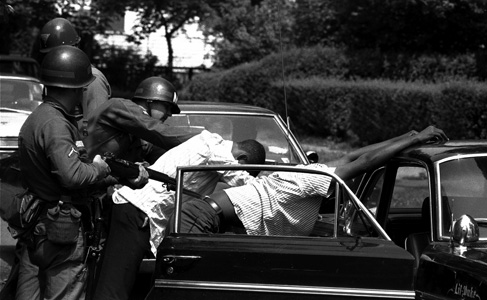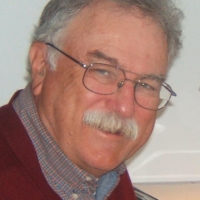
The following article is Chapter 12 of senior political reporter Tim Wheeler‘s memoirs, covering his 47 years as a writer for the Worker, Daily World, and People’s World.
We gathered in the library where the Worker staff held its story conferences one sweltering morning in July 1967. Prominently featured in the New York Times was a story about the angry explosion in Newark, N.J., over the arrest of John Smith, an African American cab driver.
Smith had been accused of “tailgating” a police vehicle and driving the wrong way on a one-way street. He was also accused of using “offensive language” and “assault” against the police officers as they arrested him.
The confrontation escalated and soon the headlines blazed about the “riot” in Newark.
What should we do? Carl Winter and the elders of the staff were discussing the options back and forth. I spoke up. “I’d like to take the train over to Newark and do some reporting.”
It was agreed. Our staff photographer, Bill Andrews, and I took the subway up to the train station and boarded a train for Newark.
When we got off the train, Newark was like a war zone. National Guard jeeps and trucks were everywhere. We walked over to the offices of the Newark Community Development Corporation, (NCDC) the “war on poverty” agency in Newark.
I interviewed Timothy Still, Newark’s director of the NCDC. He told me of NCDC’s efforts to prevent violence. Yet the anger against police brutality, chronic unemployment and poverty could not be contained. That interview was published in the next edition of the Worker.
Andrews and I made daily trips to Newark covering the deadly “rebellion of the poor” in New Jersey’s largest city.
More reckless than smart, Bill and I went to the police headquarters one day. We walked into their city room where plainclothes detectives were sitting at their desks. They were all white men.
“Can I help you?” demanded one of the detectives.
“I’m a reporter for the Worker,” I blurted. “I want to examine the death certificates of the people who have died. Can you tell me where I can find those records?”
A dead silence fell over the city room, twenty or more detectives staring at me in disbelief.
The beefy officer pulled back his jacket and rested his hand on the butt of his Smith and Wesson.
“I’m sorry. I can’t help. You and your buddy would be well advised to get on the next train back to New York City. This is a very, very dangerous place,” he said menacingly.
As Bill and I were beating a hasty retreat, a telephone receptionist just inside the entrance leaned over and whispered to me, “Go to the hospital in the Central Ward. They have everything you need.”
We headed there immediately. Sure enough, the Coroners Office was located there. They had a report on every death inflicted by the police and National Guard during that uprising.
I sat for two hours copying word for word the reports of the gunshot wounds that ultimately killed 26 people in Newark. Most of them died from gunshot wounds in the back.
The Worker featured the article on the front page, quoting verbatim from the coroners report.
A few days later, I returned to the hospital, this time by myself. When I walked in to the Emergency Room, I came upon an African American woman in tears being comforted by a surgeon in his white surgical gown. They were standing in the waiting room and the surgeon was speaking to her in a low voice.
I waited. The surgeon turned away. Girding myself, I stepped up and told her who I was. I asked her if I could interview her. She nodded.
I asked her why she was at the hospital.
In a low, trembling voice she replied, “My son was shot. He was waiting at the bus stop. He was on his way to work at the Mahway Ford plant. The surgeon just told me they will have to amputate his leg. Why did the police shoot my boy?” Then she broke down in tears. I, myself, was fighting back tears as she spoke.
The Worker carried that story too on the front page.
National Guardsmen shot ten-year-old Eddie Moss to death a few days later as he rode in the family car with his parents in Newark.
I tracked down the family in their Central Ward home. When I knocked at the door, a woman invited me in. Her eyes were red from weeping. She told me she was Eddie Moss’ mother. I was just beginning to ask my first question when Eddie Moss’ father intervened. “We don’t want any interviews,” he said, his voice shaking with grief and anger.
I apologized and got up to leave.
I wrote up the story of the child’s death, the funeral, and the heartbroken parents. But that was an interview I was never able to complete.
Four months earlier, Dr. Martin Luther King Jr. had delivered his sermon at Riverside Church in New York City condemning the Vietnam War. The bombs dropped on Hanoi were exploding in Detroit, Watts, and Newark, Dr. King charged. He could not remain silent when his own government had become “the greatest purveyor of violence in the world.” Dr. King was thinking about children like Eddie Moss when he delivered that appeal against the unbearable costs of war.
Photo: Blacks are searched at a bayonet point by National Guardsmen in Newark, New Jersey, July 17, 1967. The National Guardsmen entered the black area of the city at daybreak and searched all cars leaving that zone. Eddie Adams/AP










